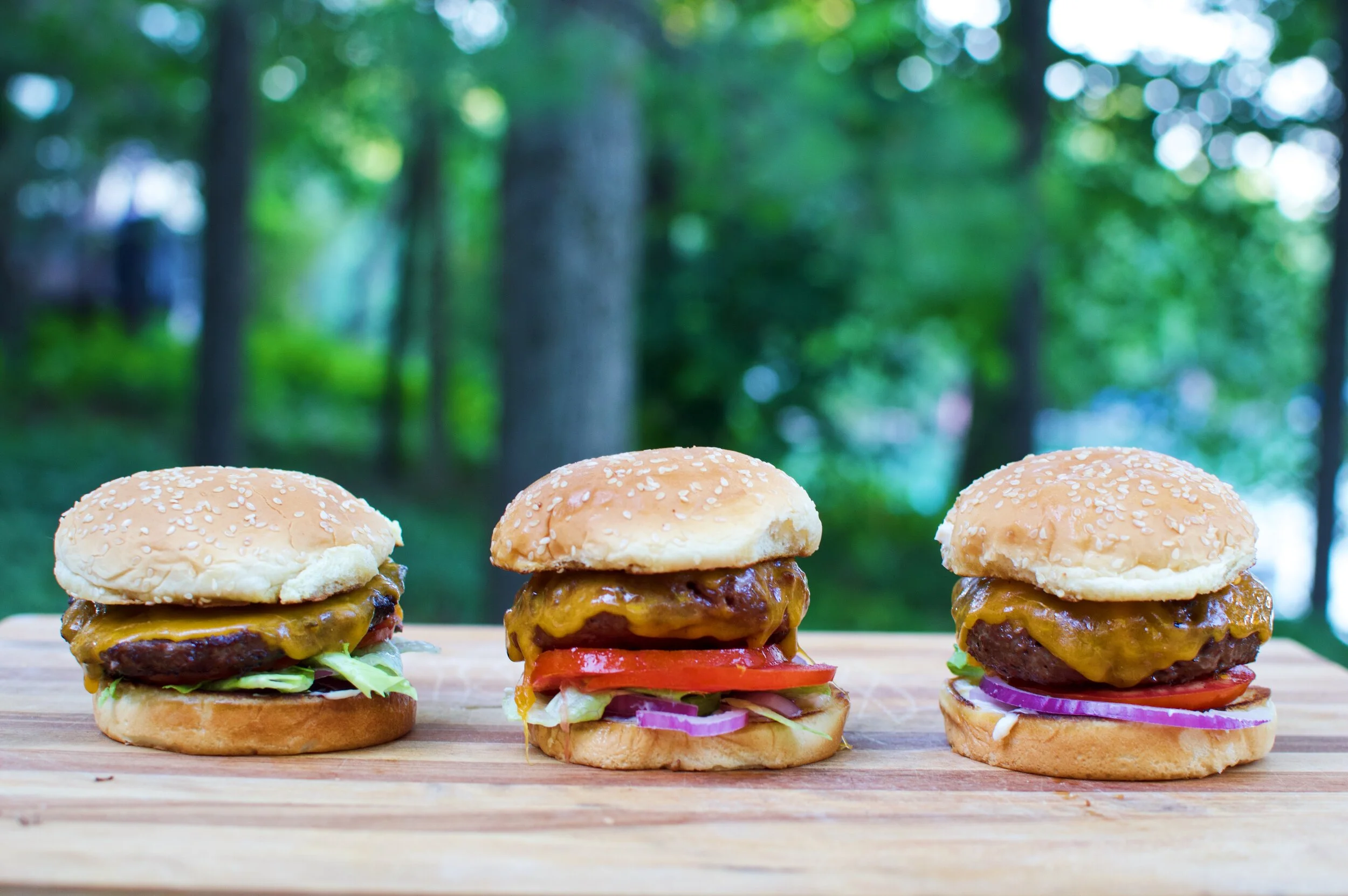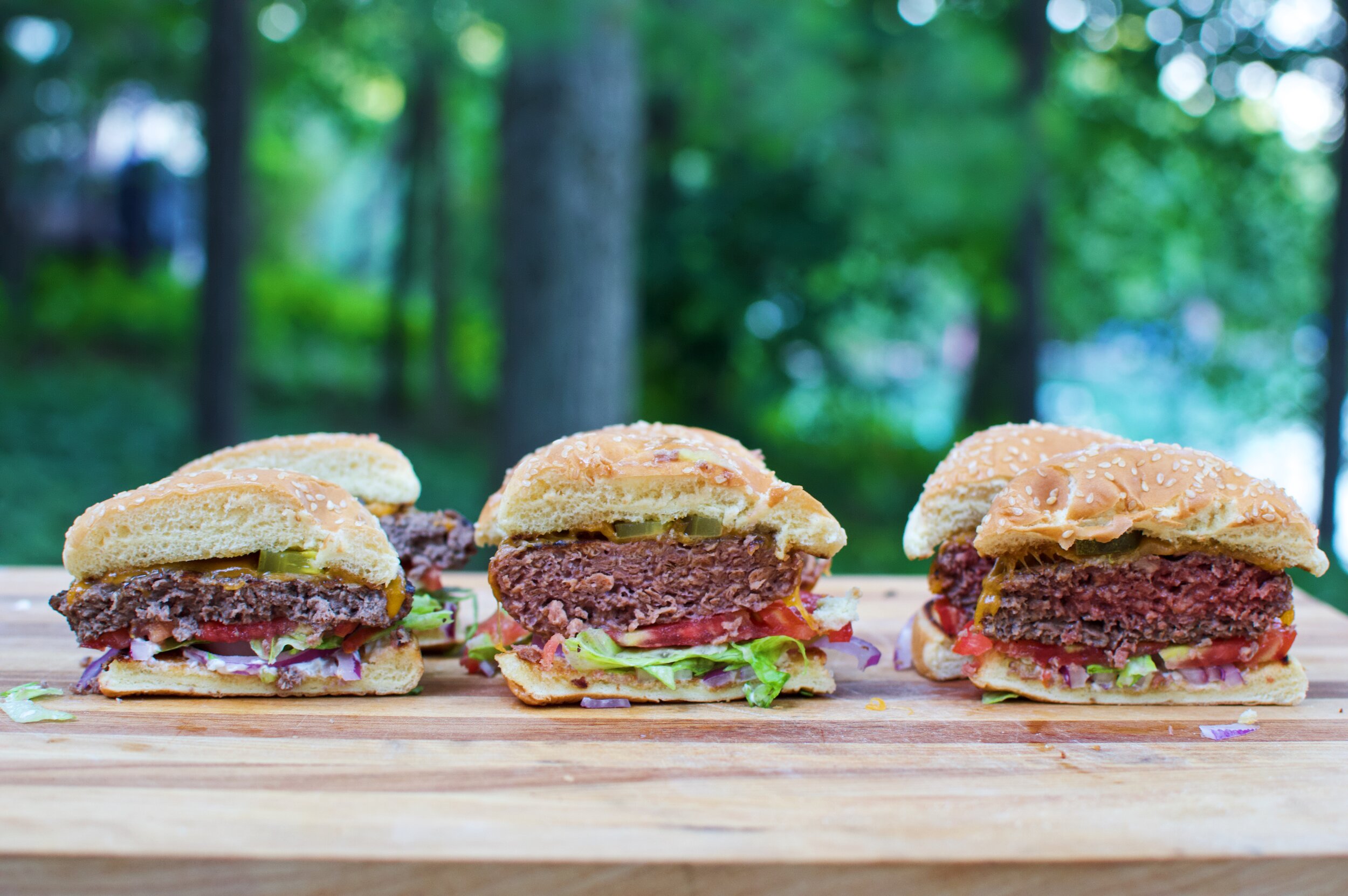Beyond vs Impossible: Comparing the Leaders of Meat Mimicry
Growing up in a household with the occasional carton of Boca burgers in the freezer, I remember scrolling across clickbait videos of vegan meat ‘that bleeds!’ a few years back and thinking it was an edgy novelty food, something between Astronaut ice cream and Soylent in its market viability. Then in August 2020, over 7,000 Burger King stores in the US began offering the Impossible Burger, a major shot across the bow from the California startup at the massive and moneyed American beef industry.
I’m intrigued by this space, knowing the immense environmental damage we do through beef production as well as the cultural importance of beef dishes in many food traditions. If a low-footprint, nearly-as-good vegetarian burger can knock back the beef consumptions at the Packer tailgates of my childhood by even 5%, that seems a win to me.
Yet I remained uncertain as these startups entered chains and supermarkets –– was this rollout a marketing flash in the pan, or a weathervane of the future of food? That uncertainty has driven me to most any fast food chain offering a new-wave vegetarian burger, from White Castle, My Burger, to Burger King, as well as trying it out at a few higher-end restaurants. In these settings, the hyperformulated sandwiches with intensely salty and sweet ingredients mask the patty itself, whether from feedlot or factory.
To really assess, I needed to cook with these vegan alternatives. So while I was last back in the US, I decided to swap in the leaders in this space (Beyond and Impossible) for a summer grill out with my family. Beyond products highly accessible –– they follow a conventional ingredient list of yellow pea protein mix enriched with coconut fats and colored red with beet juice, no more space-age than anything else in the freezer section.
Impossible, however, takes a step further into the laboratory, using a legume-based hemoglobin that is similar in structure and flavor to the hemoglobin in mammal blood. This is the tangy-metallic flavor in a rare piece of beef. Impossible’s method involves inserting hemoglobin into yeast, growing that yeast, and then extracting the leghemoglobin it produces and adding into the product. Other than the heme, Impossible’s ingredient list is mostly familiar, with a wheat protein backbone and coconut fats.
Heme is both Impossible’s ‘secret ingredient’ and their biggest challenge, with roadblocks from a lengthy FDA approval for groceries and a still-pending EU regulatory battle preventing Impossible from entering the EU at all. However, Impossible does sell products directly to consumers via their website, arriving frozen and in a dry-ice package within a few days of ordering. Once they arrived at my door, I went to the grocery store nearby to pick up a few packs of Beyond, let the products thaw, and started shaping.
Once out of their plastic bubbles, a few differences popped up right away –– Beyond was gray with an intensely sticky, gloopy texture and a pronounced cat food aroma. Impossible, on the other hand, was smoother and slicker, with a tangy beefy aroma similar to steak tartare. Both had a faint whiff of coconut in them, just on the edge of perception and more akin to somebody having walked through the room recently wearing sunscreen.Both products are flecked with white spots of varying sizes in the form of coconut fats to mimic fat in ground beef, which is a mix of different bits of fat from different animal sections in various sizes and melting points. Biting into a proper burger, there’s liquid fat for immediate richness and moisture as well as more solid bits that squish and melt as you chew.
After forming into consistent and very thick patties (to ensure the beef flavor was the main event, unlike in fast food preparations), I threw them on a hot grill alongside beef burgers from a local butcher of middling quality. The only step in this process that truly surprised me was how convincingly Impossible behaved like beef on the grill. Other than moisture loss (both vegetarian options lost very little grease or moisture), it stuck to the grill until cooked and developed char marks just like beef. Beyond, on the other hand, cooked a bit suspiciously. It developed char marks, but the meat switched colors while cooking, from gray to pink over the first few minutes. The burgers also held together very tightly on the grill.
Once off the grill and on the bun, the same texture trends remained: Impossible crumbled just like beef, with a mild springiness upon biting. Beyond, on the other hand, is much more of a springy puck with the same stickiness as when raw. Both are entirely pleasant in texture, with Impossible falling shy of beef’s springiness and Beyond missing on ground meat’s crumbliness.
Fat-wise, both burgers are nearly indistinguishable. The coconut fats in the mimicked meat result in a high-fat, pleasantly greasy burger, with just a very slight whiff of coconut, like the cow had spent a summer holiday on a coconut grove. Any toppings will mask this effectively and it’s well worth the extra bit of fattiness the coconut oil brings to the burger.
Finally, the flavor: Impossible nails the flavor of beef –– the umami, bloody tang that tells a primal part of our brain that this is among the most nutrient- and energy-dense foods in nature. Beyond comes close, with a savory and fatty mix. But Beyond only competes with black bean and Boca burgers, with a clearly not-beef flavor with the unpleasantly earthy taste of pea protein. Beyond is a well-balanced imitation, but there’s an artificial, cat-food-like aftertaste that screams that this is not beef with every bite.
Granted, Beyond’s flaws are only evident in burgers of significant thickness and a thinner Beyond patty could still compose a great burger. Quality produce and thoughtful prep (including toasting buns) will still result in a far, far better burger with Beyond meat than the vast majority of overcooked backyard burgers with a squeeze of oversweet ketchup on an untoasted sugary bun. If you’re craving a burger and the choice is between Beyond and beef, in the vast majority of situations I would recommend picking up Beyond unless you’re pouring some serious attention into the quality and grind of your beef.
In a direct comparison, it’s clear Beyond and Impossible are playing in different leagues. Beyond is a meaningful improvement over earlier generations of fake burgers, whereas Impossible truly mimics the flavor and behavior of a generic supermarket ground. Beyond never loses its cat food aroma, sticky dense texture, or the earthy minerality of pea protein.
Even with Beyond’s shortfalls, they’re winning. They’ve inked deals with titans like Publix, Target, and Wal-Mart in the US and are well-distributed in grocery chains across Europe and around the world. Impossible is not shying away from major restaurant distribution but continues to struggle with regulatory approval and production ramp-up. Beyond seeks to seize on their challenges, even publicly poaching any Impossible orders unfulfilled due to supply shortages.
Regardless who wins the space on your supermarket shelf or your grill, I keep coming back to the question of why we’re here in the first place. Why do we need to turn to food companies with millions in funding to undo the damage done by food conglomerates with billions in revenue?





